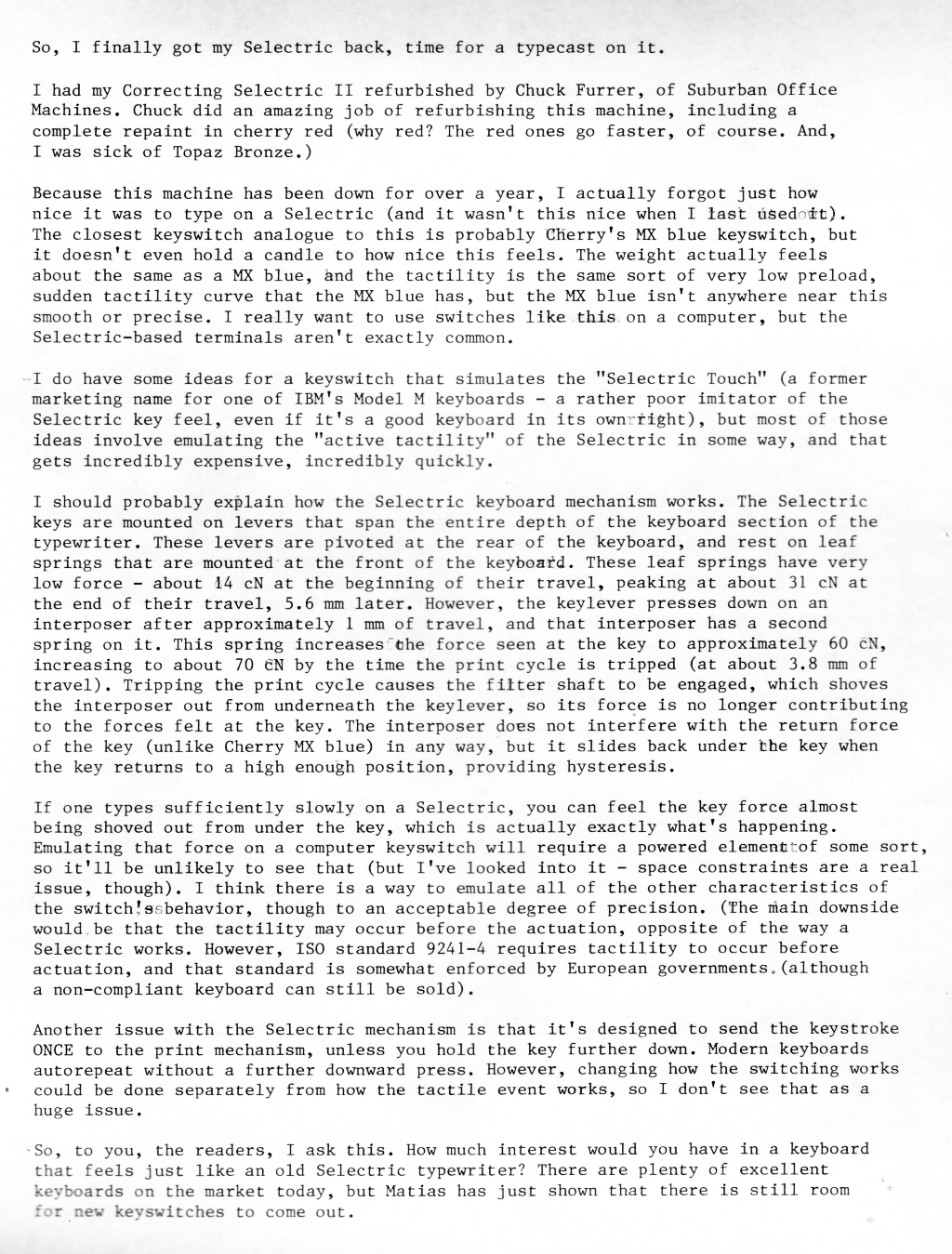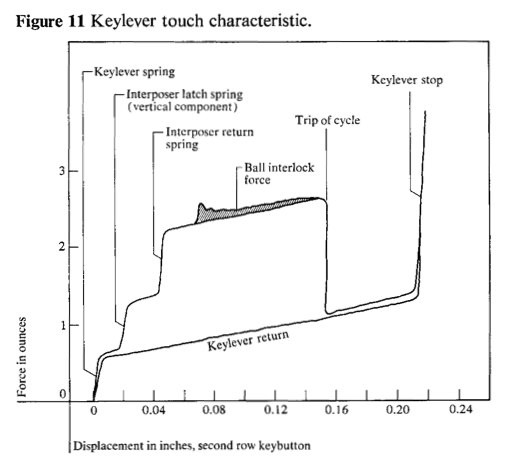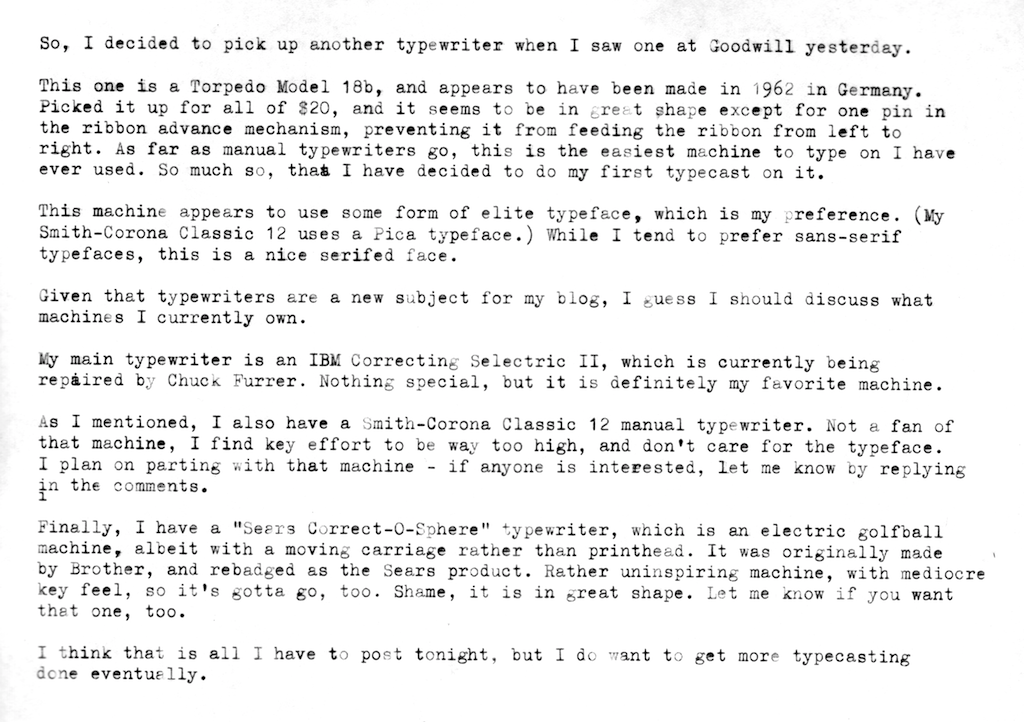A couple weeks ago, I found the SwissMicros credit card-sized clones of the Hewlett-Packard Voyager series of programmable calculators, and decided to order one. Today, my calculator arrived, so it’s review time! (And, I apologize in advance for the crappy camera phone photos.) Continue reading “SwissMicros DM-15CC calculator review”
Finally got my Selectric back up and running
Bard’s Tale for Android IIGS emulator analysis… and then some
The other day, I saw that Bard’s Tale for Android had an Apple IIGS emulator hiding in it. Given that the game was $2.99, and I have an HP TouchPad running Android handy, I decided to grab it, just to see what was going on with the emulator.
Here’s my initial analysis, in the form of a YouTube video (sorry for the poor quality):
Bard’s Tale (Android) embedded Apple IIGS emulator – YouTube
So, now that I had identified what the emulator actually was, I decided to go for a deeper look. Continue reading “Bard’s Tale for Android IIGS emulator analysis… and then some”
Picked up a new-to-me typewriter, decided to start typecasting
Where personal computing is headed in the next 10 years
The release of Apple’s new MacBook Pro with Retina Display, and the discussion regarding its proprietary, difficult to expand nature (as found by iFixit when they tore down the MBPR), has triggered some thoughts on where personal computing is headed. Continue reading “Where personal computing is headed in the next 10 years”
Proposal: Let’s create a successor to RIAA Radar
For those unaware, RIAA Radar was a tool that Ben Tesch wrote, that made it very easy to determine whether a certain piece of media was released by a RIAA member label, to assist with boycotting the RIAA. It worked by searching Amazon for the search term in question, and returning all CDs that met that search term, along with the label that published that CD, and a simple “safe”, “unknown”, or “warning” image based on whether the label was a RIAA member or not. Unfortunately, due to maintenance and hosting issues, he took it down.
However, I feel that such a service is still extremely useful today, and in fact, should be extended to other content industry organizations, such as the MPAA. Continue reading “Proposal: Let’s create a successor to RIAA Radar”
Warning about the WIMM One’s EULA
So, I just got done with my smart watch series, and decided to sign up for the WIMM Labs site, and maybe purchase a WIMM One.
I was presented with a EULA, not entirely unexpected given that their site provides private downloads of things like the SDK.
Occasionally, I actually read EULAs. There’s an annoying reverse engineering clause, although it’s fairly toothless. The clause that really bothers me, though?
CONFIDENTIALITY: You acknowledge and agree that the Software and Hardware were developed at considerable time and expense by WIMM Labs, and are confidential to and a trade secret of WIMM Labs and/or third parties. You agree to maintain the Software and Hardware in strict confidence and not to disclose or provide access thereto to any person.
So, you’re telling me that, even though I can buy the damn thing for $199 on Amazon, I can’t show it to anyone else or let them use it? Really, WIMM?
Therefore, I decided to buy a refurbed Abacus Wrist PDA – I had one a while back and it died, but IMO it was a brilliant device, potentially the best smart watch even by modern standards (except for not being able to get alerts from an Android device). I’d be willing to consider the WIMM One if they revised that portion of their EULA, but not before then.
I’ll post the full EULA text after the break – you get it after signing up for the WIMM site, and if you simply buy the device without signing up for WIMM’s site, you don’t see the EULA at all until you’re setting the watch up. Continue reading “Warning about the WIMM One’s EULA”
The history of the smart watch, part 4 – the modern era
Finally, we’re to the modern era of smart watches – stuff that’s actually for sale today.
Most of the modern smart watches all connect to a host device via Bluetooth (with one exception), at least an Android device if not additional platforms, for notifications. Some act as dumb terminals (along the lines of the Abacus/Sony watches mentioned in the previous post), whereas some have some local processing power and even apps (some running Android). Continue reading “The history of the smart watch, part 4 – the modern era”
The history of the smart watch, part 3 – SPOT, PDAs, and bluetooth
So, after moving my blog entirely from My Opera to a self-hosted WordPress install (I’m not done migrating the older entries, I’m partway through 2006’s entries there), I think it’s time to continue this series.
Last entry, I left off in the mid 1990s, with pager watches and the odd databank watch. But, for the most part (with a couple exceptions in the mid 80s), watches haven’t actually been “smart” yet.
We’ll begin where we left off, and continue with the second start of true smart watches – watches with data storage, local processing power, and arbitrary code support. Continue reading “The history of the smart watch, part 3 – SPOT, PDAs, and bluetooth”
The history of the smart watch, part 2 – storage, programmability, multimedia, and communication
Yesterday, I covered the history of the smart watch from the 1940s slide rule watch, to the 1970s calculator watch, and dipped into the 1980s with musical and gaming watches.
However, while some of those watches had processing ability, it was very limited, not programmable, and transient – once you were done processing data, you got back to the clock functionality, and whatever you were doing was gone. But, with Japanese electronics makers competing, some real innovation started. Continue reading “The history of the smart watch, part 2 – storage, programmability, multimedia, and communication”




